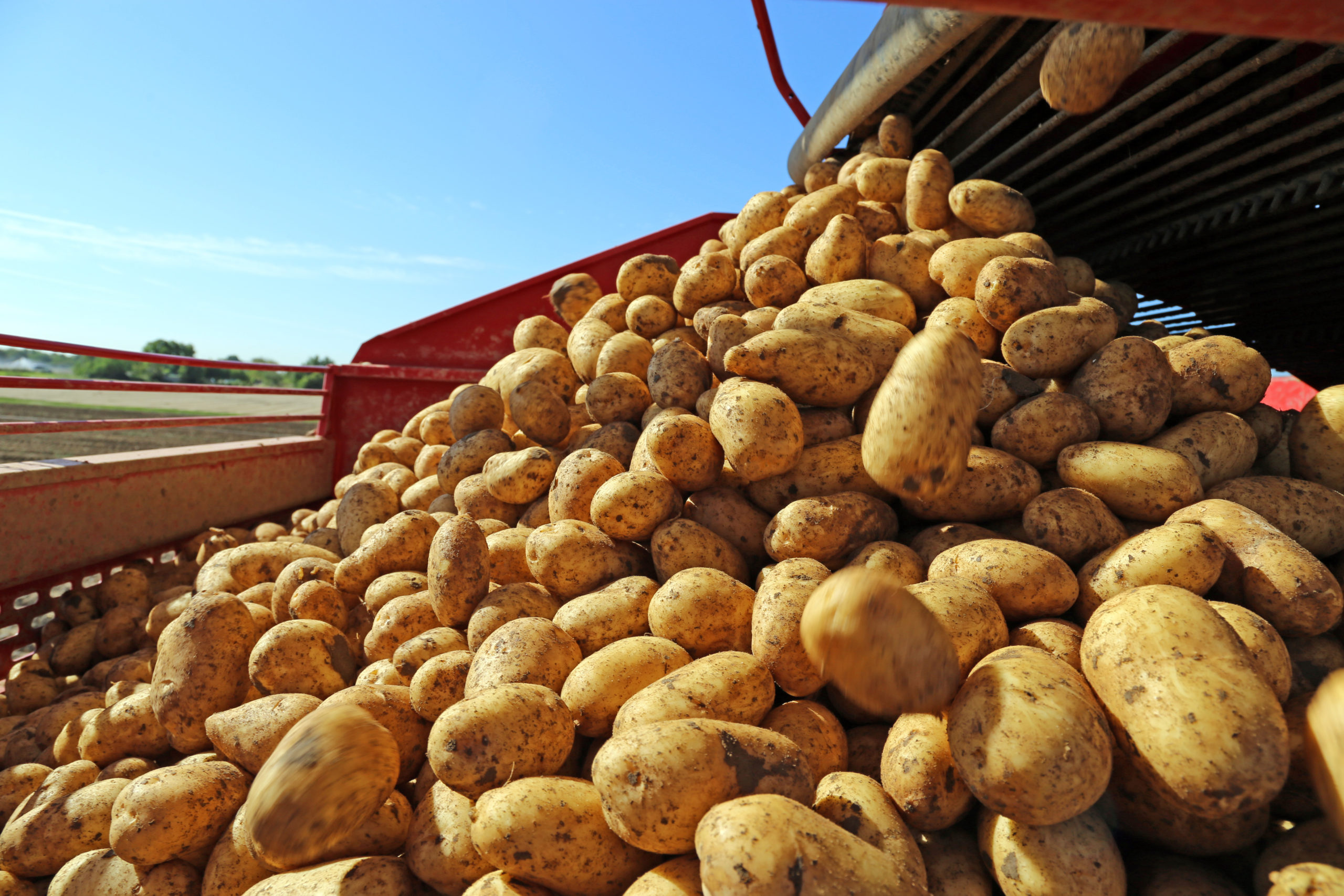By Libby Rens, PhD

US potato yields have doubled in the past 50 years. DOUBLED! That means that in your lifetime, potato production methods have increased yields by 22,500 POUNDS OF POTATOES PER ACRE. That’s equivalent to the weight of 2.5 Statue of Liberty’s worth of additional potatoes on a 50-acre field, bringing the 2018 average potato yield to 450 cwt/acre in Idaho, 600 cwt/ac in Oregon, and 630 cwt/ac in Washington.
Potatoes are high nutrient users, especially at this concentrated level of production. As higher amounts of ammonium and potassium fertilizers are being applied to support heavy potato yields, there is competition for the uptake of other nutrient cations, notably magnesium. It follows that uptake of other less famous but still essential macronutrients, like magnesium, ought to be reexamined.
Magnesium has a particularly important role to play for a storage crop like potato. Magnesium is crucial if you want the carbohydrates produced in the leaves to be translocated below ground and incorporated into potato yield.
Magnesium Deficiency
Recently, one of our customers paged through a potato fertility handbook provided by their soil lab,
“Everything from nitrogen to molybdenum is in here, but so little guidance on magnesium. We have a lot of pockets where growers have a magnesium deficiency, but not enough information on how to manage it.”

Magnesium deficiency reduces potato crop productivity long before visible symptoms are present. One of the first results of magnesium deficiency is reduced partitioning of carbohydrates from the shoots into roots and tubers. This not only reduces yield potential but also limits the extent of root exploration for nutrient and water uptake. Magnesium nutrition increases specific gravity and potato firmness, which in turn reduces bruising and food waste. At a basic level, magnesium is necessary for the growth and productivity of the potato plant, as it is a key factor in photosynthesis, enhancing assimilation and carbohydrate translocation, and enhances nitrogen uptake and utilization.
Visible magnesium deficiency symptoms will begin at the base of the plant where leaves become yellow with interveinal chlorosis, sometimes leading to purple or necrotic leaf margins. Since magnesium is mobile within the plant, the new leaves ‘steal’ it from the old leaves. Maintaining healthy foliage is crucial for producing high yields. Remember, that symptomatic yellowing is also reducing crop photosynthetic productivity!
Magnesium and Your Soil
Magnesium deficiency has been observed in regions characterized by very sandy soils, acid soils, and areas with surface irrigation low in magnesium. The Aridisol soils of Idaho’s, Washington’s, and Oregon’s potato producing regions have a few challenges to overcome to maintain sufficient magnesium fertility for the shallow-rooted potato crop.
• Sandy – shallow-rooted crops like potato need available nutrients in the top 1-2 feet. Sandy soils have a high infiltration rate and magnesium leaching potential.
• Low CEC – low cation exchange capacity makes magnesium at risk for leaching and runoff
• High calcium – magnesium is held less strongly by the soil than calcium, and calcium also competes for plant uptake.
• Increased use of potassium and ammonium-based fertilizers – repeated, heavy applications of nutrient cations without a magnesium source leads to competition in the soil and plant uptake.
• Magnesium mobility – Magnesium is very mobile in the soil profile as compared to other cations because it has a large hydration radius making it less bound to the soil.
• Acidic pockets – magnesium availability decreases under pH 6.5 and severely decreases under pH 5.5.
How Much Magnesium to Apply
Application rate decisions are a balance between how much magnesium is in your soil, how much are you likely to lose due to leaching, runoff, crop removal, and the level required to support plant and tuber growth for maximum bulking and yield. A 400-500 cwt/ac potato crop pulls 40 lbs/ac of magnesium from the soil each season. Develop an efficient and environmentally responsible nutrient management program and monitor plant and soil nutrient status throughout the season.
Get your soil tested for magnesium to determine your fields’ baseline levels. Deficiencies can develop at exchangeable soil Mg levels below 100 ppm. To remedy this, the University of Idaho recommends banding magnesium at 20 lbs/ac, which can be accomplished using 180 lbs of Intrepid Trio® per acre.
If tissue magnesium drops below 0.3%, then in-season correction is necessary. Apply an immediately available magnesium source like Intrepid Trio® to secure crop magnesium demand before it leads to reduced crop productivity. Incorporating Intrepid Trio® as part of a custom blend for potatoes provides nutrition for potassium, magnesium, and sulfur at an ideal ratio for nutrient availability.
Intrepid Trio®
Intrepid Trio® is 100% natural langbeinite, a unique mineral with three essential nutrients in every granule providing a long-lasting, readily available source of low-chloride potassium (22% K2O), 11% magnesium and 22% sulfur at a ratio ideal for potatoes grown in sandy, high calcium, low CEC soils. Intrepid Trio® is also available in OMRI listed grades approved for organic farming.

